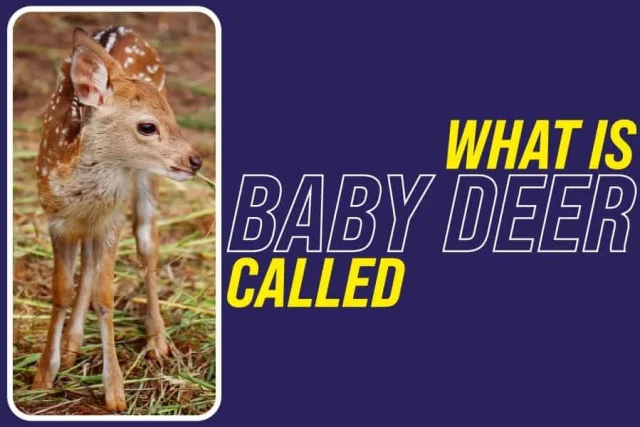Deers have been called different names depending on their age, gender, and sometimes species.
There are many species of deers in the world (43 species), and most of them have been given different names depending on their places of origin and colors.
They include red deer, European fallow deer, sika deer, white-tailed deer, reindeer, and water deer.
Small and medium-build deers are popularly called bucks, while male deer of larger species are called stacks or bulls.
A doe is a female deer, but you can also refer to it as a cow or a hind. This article will focus on baby deers, what they are called, and some facts about them. Let’s get into it. So,
What is a baby deer called?
A baby deer is called a Fawn. Fawn is the most accurate and commonly used name to refer to a young one of a deer.
There exist other names for baby deer, depending on their size. Baby deer for small species such as muntjac is sometimes called kid due to their small size.
Most humans call it so because they compare it to the young ones of other animals such as goats. For larger species of deer such as moose and reindeer, the young one is sometimes called a calf.
This is again due to comparison to other big animals such as giraffes, elephants, and cows; because their young ones are referred to as calves.
Amazing Facts About Baby Deer
Having known the name of a baby deer, let’s now explore some interesting facts about them.
- Fawns are typically born with white spots on their coats. The pattern of these spots resembles the streaks of light and dark shadows of trees. So those spots camouflage the fawns from predators.
- The fawns lose their white spots within their first year, and the coat takes more of a solid color.
- Fawns have no scent. This prevents them from being detected by other animals or predators passing by.
- Mostly, white-tailed fawns are born between April and July, with the majority being born in June.
- Male fawns always weigh heavier than females, the average being six to eight pounds.
- Most fawns are left alone, and surprisingly this is the best chance of survival.
Here Is How Deer Protect Their Fawns.
Fawns often stay away from their mothers. They are often left hidden in thick bushes or vegetation to avoid predators.
This is done to avoid their scent from leading the predators to their young ones. They only return when it is time to feed or move their young ones.
Conclusion
Baby deer are docile animals and having known that they are always left alone by their mothers, it is important not to touch them whenever you see one.
They are born scentless so that their predators do not detect them. When you touch them, you may leave them with your scent, which endangers their lives.














